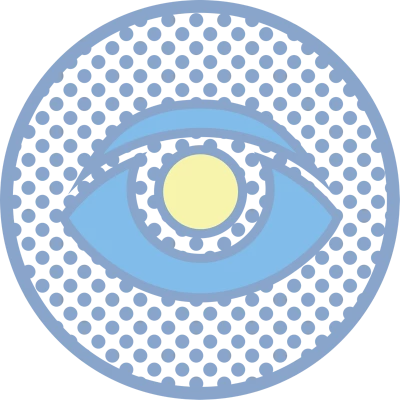Acute Congestive Glaucoma: Definition, Causes, Symptoms, and Treatment
Acute congestive glaucoma is a sudden and severe form of glaucoma that can cause rapid vision loss if not treated promptly. Characterised by increased intraocular pressure, it often presents with eye pain, redness, and blurred vision.
Early diagnosis and treatment are critical to prevent permanent optic nerve damage. In this blog, we will walk you through acute congestive glaucoma, its causes, symptoms, diagnosis, and when to see a doctor. Since conditions like cataract or retinal detachment can also threaten eyesight, understanding the differences and seeking timely care is essential
What is Acute Congestive Glaucoma?
Acute congestive glaucoma (acute angle-closure glaucoma) is an acute event in which intraocular pressure (IOP) rises significantly. This pressure causes the drainage angle of the eye to be blocked.
This blockage limits the normal outflow of aqueous humour- a fluid that feeds the eye and gives it shape. Failure to treat this condition in time may result in permanent loss of vision in a few hours to days. Unlike other types of glaucoma that progress slowly, this condition demands immediate medical attention to prevent permanent vision loss.

Causes of Acute Congestive Glaucoma
Anatomical Factors
Individuals with anatomically narrow angles are more prone to this type of glaucoma. Factors such as a smaller anterior chamber, a thicker lens, or a shallow corneal angle can increase the risk of blockage in the drainage system of the eye.
High Intraocular Pressure (IOP)
An abrupt increase in intraocular pressure is the defining feature of acute congestive glaucoma. The pressure rises rapidly when aqueous humour is unable to drain through the trabecular meshwork due to angle closure.
Lens Displacement
Dislocation or swelling of the natural lens can cause it to press forward against the iris, narrowing or closing the drainage angle and triggering an acute attack.
Eye Trauma or Injury
Physical trauma to the eye can disrupt the delicate structures responsible for fluid drainage, leading to sudden IOP spikes and acute glaucoma symptoms.
Tumors
Rarely, intraocular tumours can distort anatomical structures, leading to secondary angle closure and increased intraocular pressure.
Symptoms of Acute Congestive Glaucoma
Severe Eye Pain
Pain is usually sudden and intense, often described as a deep ache in or around the affected eye.
Blurred Vision
The rise in IOP can cause corneal oedema (swelling), resulting in hazy or blurry vision.
Nausea and Vomiting
Due to the severity of the pain and pressure, patients may experience systemic symptoms like nausea or even vomiting.
Redness of the Eye
The affected eye often appears red and inflamed due to the increased pressure and congestion of blood vessels.
Rainbow Halos Around Lights
Patients may see coloured rings or halos around lights, especially in dim lighting, due to corneal swelling and light diffraction.
Diagnosis of Acute Congestive Glaucoma
Prompt and accurate diagnosis is essential for effective treatment. The following clinical tests are commonly used:
Visual Acuity Test
This standard test helps evaluate the extent of vision impairment caused by increased intraocular pressure.
Tonometry
This test measures intraocular pressure and is crucial for confirming glaucoma. A significant elevation usually indicates acute glaucoma.
Gonioscopy
A gonioscope is used to visualise the drainage angle of the eye, helping determine if the angle is closed, which confirms the diagnosis of angle-closure glaucoma.
Retinal Examination
An ophthalmologist will examine the retina and optic nerve for any signs of damage caused by elevated IOP, which can guide further management.
Treatment Options for Acute Congestive Glaucoma
This condition requires emergency medical intervention to relieve pressure and prevent optic nerve damage.
Medication for Acute Congestive Glaucoma
Medications such as carbonic anhydrase inhibitors, beta-blockers, alpha agonists, and hyperosmotic agents are used initially to lower IOP. These help reduce fluid production or increase outflow.
Acute Angle-Closure Glaucoma Treatment
Once IOP is reduced medically, laser or surgical interventions are planned to address the underlying angle closure and prevent recurrence.
Laser Therapy
Laser peripheral iridotomy is a common procedure where a small hole is made in the iris to allow fluid to bypass the blocked drainage angle.
Surgical Options
In cases where laser treatment is not sufficient or suitable, surgical options such as trabeculectomy or glaucoma drainage implants may be considered. These options can be used to create a new drainage pathway for the fluid.
Preventing Acute Congestive Glaucoma Attacks
While not all causes can be prevented, especially anatomical ones, certain precautions can reduce the risk of attacks.
Regular Eye Examinations
Routine comprehensive eye exams can detect narrow angles before symptoms occur. This allows preventive interventions such as laser iridotomy.
Proactive Medication Use
Patients at risk may be advised to use prescribed medications to manage eye pressure and delay or prevent acute episodes.
Avoiding Triggers
Certain medications, such as antihistamines or decongestants, can precipitate attacks by dilating the pupils. Patients with narrow angles should consult their ophthalmologist before using such drugs.
When to See a Doctor for Acute Congestive Glaucoma
Immediate medical attention is essential if you experience symptoms such as sudden eye pain, blurred vision, or rainbow halos. Delaying treatment can lead to irreversible vision loss. Individuals with a family history of glaucoma or those diagnosed with narrow angles during routine exams should schedule regular follow-ups with a glaucoma specialist.
Frequently Asked Questions (FAQs) about Acute Congestive Glaucoma
What is another name for acute congestive glaucoma?
Acute congestive glaucoma is also known as acute angle-closure glaucoma. This condition involves a sudden rise in intraocular pressure due to the closure of the eye’s drainage angle, requiring immediate medical attention to prevent permanent vision loss.
What are the main differences between acute congestive glaucoma and other types of glaucoma?
Unlike open-angle glaucoma, which progresses slowly, acute congestive glaucoma causes sudden, severe symptoms due to rapid intraocular pressure elevation. It requires emergency treatment, while other types may be managed with long-term medication or routine monitoring.
How is acute congestive glaucoma treated without surgery?
Initial treatment often involves oral and topical medications like carbonic anhydrase inhibitors, beta-blockers, and hyperosmotic agents to reduce intraocular pressure. These stabilise the eye before any potential surgical or laser procedures are considered.
Is acute congestive glaucoma more common in older adults?
Yes, it is more common in adults over 50, particularly in individuals with anatomically narrow angles, hyperopia (farsightedness), or a family history of glaucoma. Ageing eyes are more susceptible to the structural changes that trigger angle closure.
What medications are commonly prescribed for acute congestive glaucoma?
Common medications include acetazolamide (a carbonic anhydrase inhibitor), timolol (a beta-blocker), pilocarpine (a miotic agent), and mannitol (an osmotic diuretic). These work together to rapidly lower intraocular pressure and reduce the risk of optic nerve damage.
Is acute congestive glaucoma hereditary?
Genetic factors can play a role. Individuals with a family history of angle-closure glaucoma are at increased risk. While not directly inherited, eye anatomy that predisposes someone to this condition can run in families.
This information is for general awareness only and cannot be construed as medical advice. Recovery Timelines, specialist availability, and treatment prices may vary. Please consult our specialists or visit your nearest branch for more details.Insurance coverage and associated costs may vary depending on the treatment and the specific inclusions under your policy. Please visit the insurance desk at your nearest branch for detailed information.
